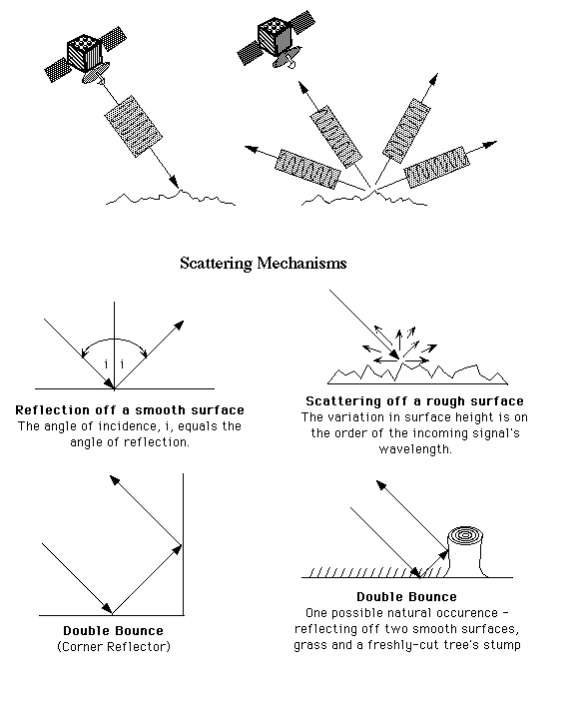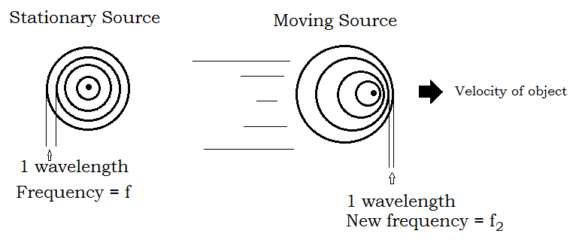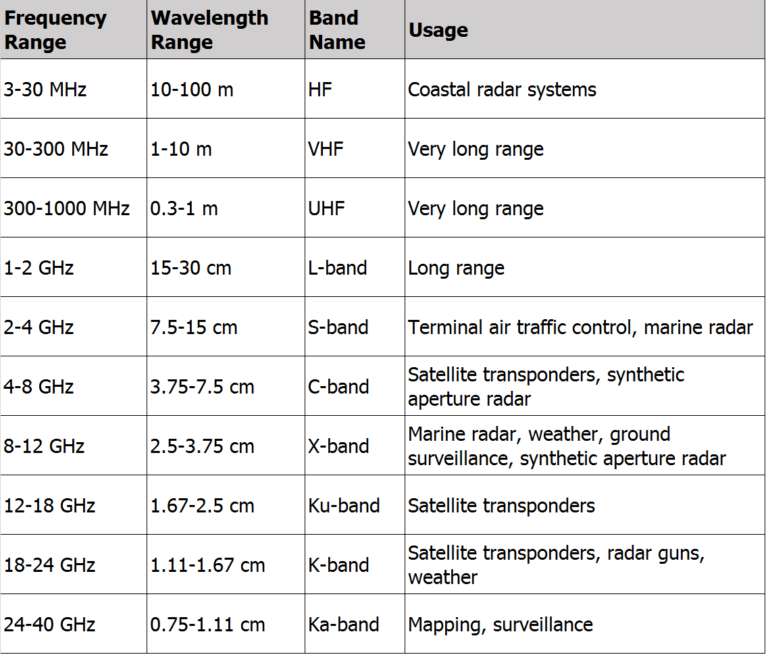Heather Hunter • Feb 24, 2017
Radar in Earth and Planetary Science: An Intro
If you’ve ever been on a ship or been to an airport, you’ve likely seen a radar. Or, if you’ve watched the weather report on your local news, you’ve probably heard about “Doppler radar.” But if you haven’t heard about or seen any of these things, what exactly am I talking about?
Radar stands for “[RA]dio [D]etection [A]nd [R]anging.” It’s a sensor that generates microwave radiation (let’s call it a “signal”) and uses that signal to detect and locate objects. A radar can do this because the signal it sends out (or “transmits”) bounces off material in its path in different ways. How the signal bounces off the material depends on the composition of the material, from what direction the signal is traveling, the frequency of the radar’s transmitted signal, and the size and shape of the object.
What kinds of things are radar used to observe? The first applications of radar devices were the upper atmosphere and lightning, and, of course, military-related (i.e.: to locate air, ground, and sea targets). These days, a typical object for a radar might still be an aircraft or a ship, but also natural objects, like precipitation (as with your weatherman’s Doppler radar), ice, aurora, spacecraft, and celestial objects. Your radar might be on the ground, attached to the bottom of an aircraft, or part of a payload on a satellite in space.
Regardless of whether your radar is on the ground or in space, when a radar signal reaches its intended object, a couple of things happen. As with the optical light you see with your eyes, a radar signal will either reflect off the object back to the radar, scatter in many different directions, or bend around the object in a process called “diffraction”. Depending on the objects being observed, the wavelength of the signal, and how the signal gets back to the radar, the radar will discern different properties of the object, including location, size, roughness, and speed.
In fact, one of the most unique features of a radar is its ability to determine the distance to its target. It does this by measuring the time it takes for its transmitted signal to return back to the radar, and that’s done by digitally applying a “time marker” to the signal before its transmitted.
But what if your target is moving? To determine how fast a non-stationary target is moving, radar systems take advantage of the “Doppler effect”. You may have heard about this in reference to sound waves, with the familiar example of an ambulance siren. The sound waves originating at the siren have some kind of frequency (or pitch) and some wavelength (or spacing between crests in the sound wave).
As the ambulance approaches you, the siren’s pitch seems higher. The actual frequency and wavelength of the siren’s sound waves didn’t change, but, because the ambulance is moving, the apparent frequency and wavelength changed.
In other words, the ambulance moved location during 1 wavelength (or 1 period, or 1 cycle) of the siren’s sound wave, effectively shortening the wavelength of the sound wave, as it appears to you. Similarly, as the ambulance moves away, the effective wavelength grows, making the pitch of the siren lower. So, for a radar, a moving object will appear to reflect the transmitted signal at a different frequency than it was originally sent. By analyzing the change in frequency, the radar can then determine the velocity of the object.
Radars operate in a part of the electromagnetic spectrum called the “microwave band”. This range of frequencies spans from 3 megahertz (MHz), or 3,000,000 hertz (Hz) to approximately 40 GHz (or 40,000,000,000 Hz). In the range of 3 MHz to 30 MHz, you have what are called “HF Radar”. These low frequency radar are famously used on coasts and boats to track and measure ocean waves and currents. For example, the National Oceanic and Atmospheric Administration (NOAA) has many HF radar in several locations along the East and West coasts of the United States.
The higher frequency radar, from about 300 MHz to 40 GHz, are often used on aircraft or satellites that look down at Earth. What would be the benefit of these radar over regular, optical satellite sensors? As we’ve learned, radars generate their own radiation. Optical sensors, like the one on GOES-16, for example, rely entirely on radiation from the sun to illuminate a given scene. What this means is that optical sensors can’t see at night. On the other hand, since radars use their own “light” source, they can observe the Earth without help from the sun!
Another pitfall of optical sensors is that they can’t see through obstructions in the atmosphere, like clouds, smoke, or dust. This is because the wavelength of the optical light is either smaller or the same size as the particles in the atmosphere, depending on which particles are in the way. The particles either absorb, transmit, or simply reflect the incoming light depending on their size and molecular structure. On the other hand, light in the microwave band of the electromagnetic spectrum has a comparatively longer wavelength, meaning the microwave energy won’t be as sensitive to the small particles in the atmosphere. This allows microwave radiation to go all the way to the Earth’s surface, except during torrential rainfall.
Given what we’ve learned about how a radar operates versus a typical optical sensor, what kind of information do you think you see when you look at a radar image?
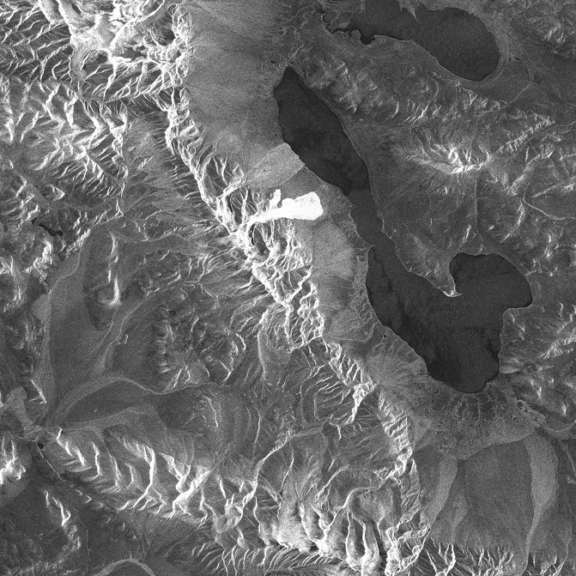
Optical sensors capture solar energy that’s been reflected off an object on the Earth. At an optical sensor, this information comes at many different wavelengths between violet and red. An “optical image” gives you information on an object’s composition, temperature, and other physical properties, including roughness or texture, to a degree.
An “image” from a radar gives you an image of what is called the “radar backscatter”, or the amount of energy the radar records after a transmitted signal is bounced off a given object or scene. It indicates how rough surfaces are, which is especially useful when looking over the ocean.
Now that we’ve learned the basics of how radars work, how have they actually been used on satellites, either to study the Earth or other planets? One type of radar, ubiquitous in space exploration, is the Synthetic Aperture Radar (SAR). From ocean waves on Earth to the surfaces of Venus and Saturn’s moon, Titan, SAR has given us unique views of our solar system that just aren’t possible with regular optical sensors.
And SAR is what we’ll discuss next time!
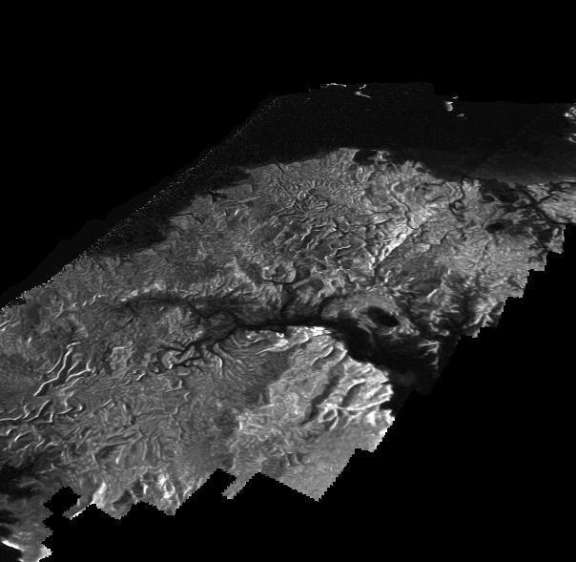
Let’s Go Beyond The Horizon
Every success in space exploration is the result of the community of space enthusiasts, like you, who believe it is important. You can help usher in the next great era of space exploration with your gift today.
Donate Today

 Explore Worlds
Explore Worlds Find Life
Find Life Defend Earth
Defend Earth



